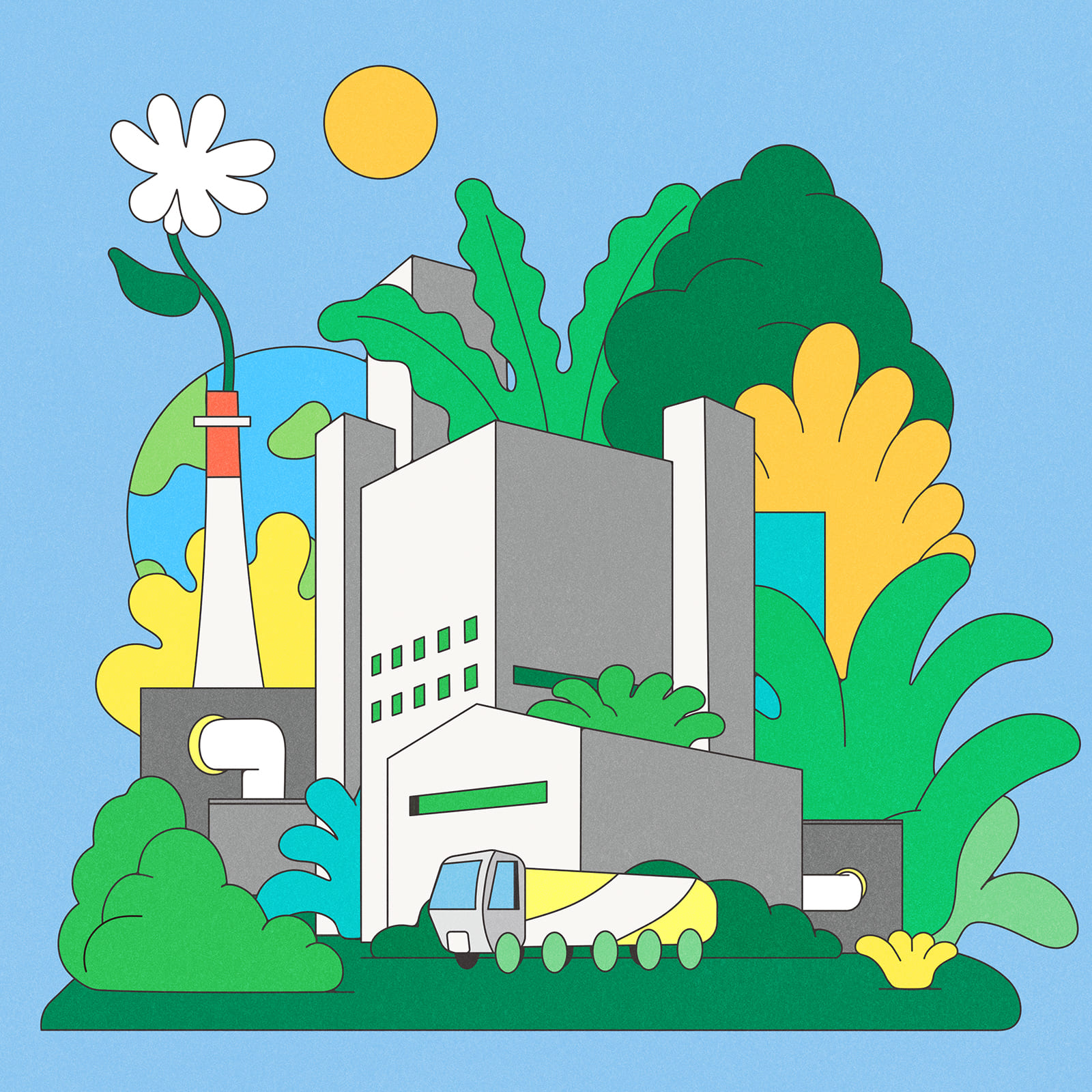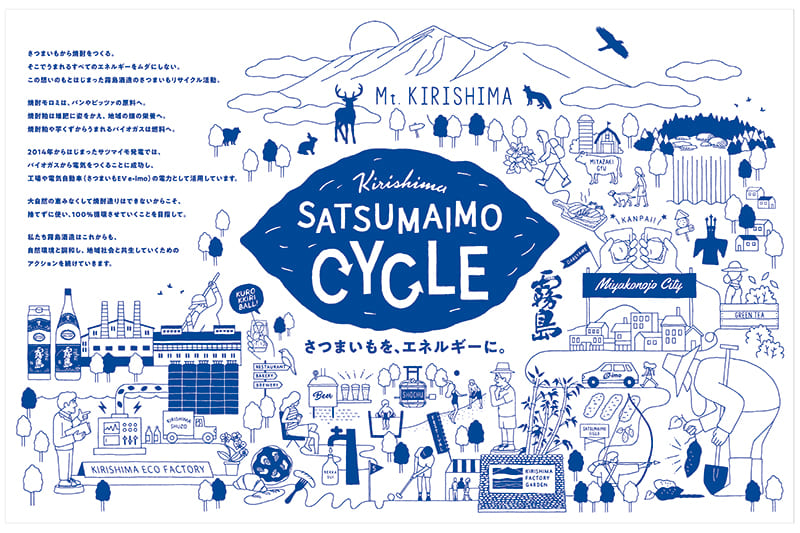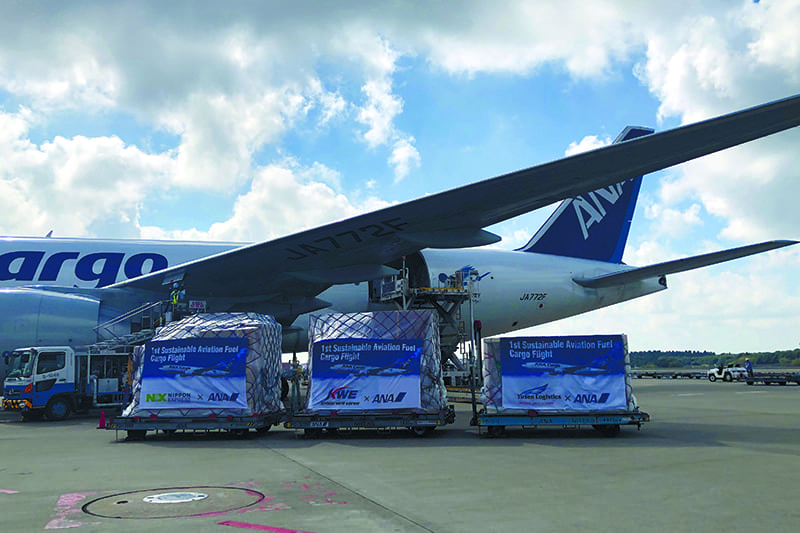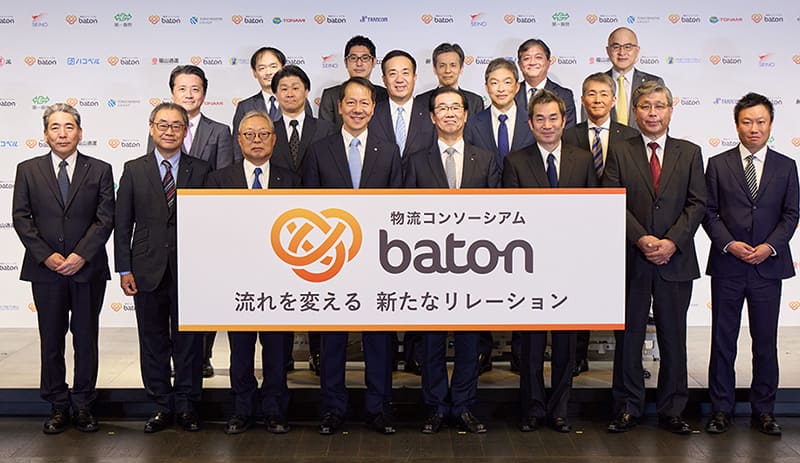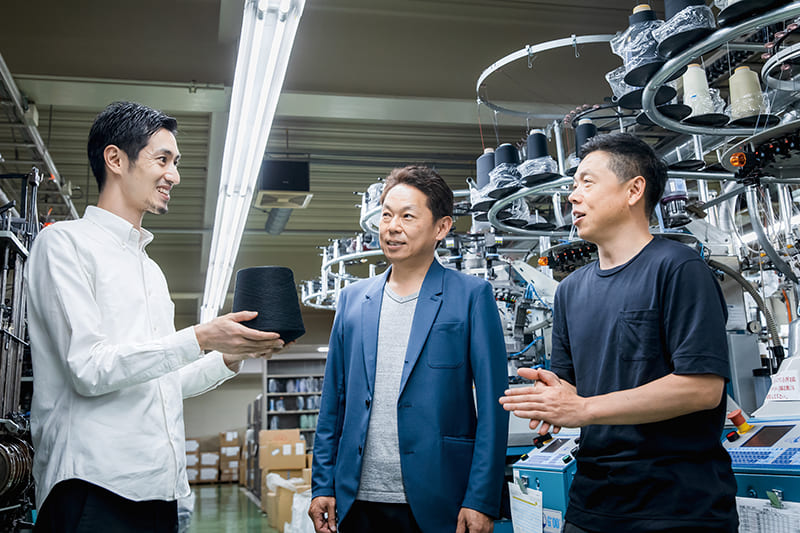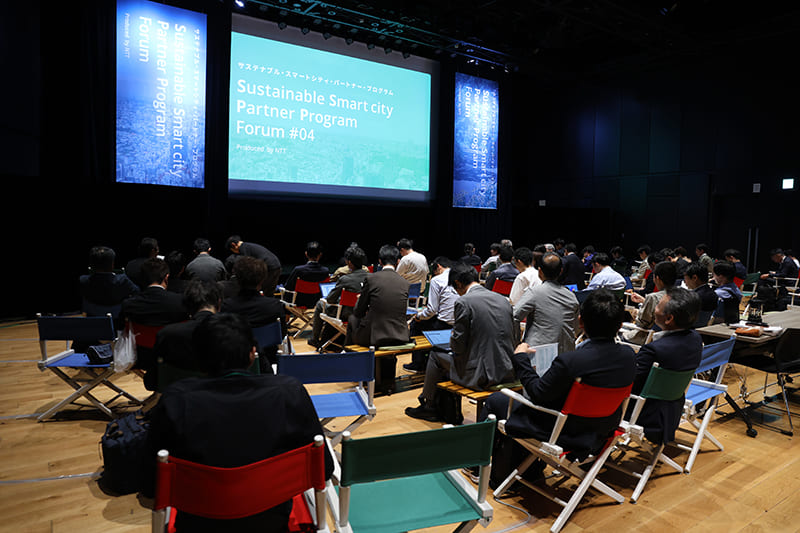September 29, 2023
JAL orients path toward leading on sustainability
VOL. 9: Japan Airlines Co.
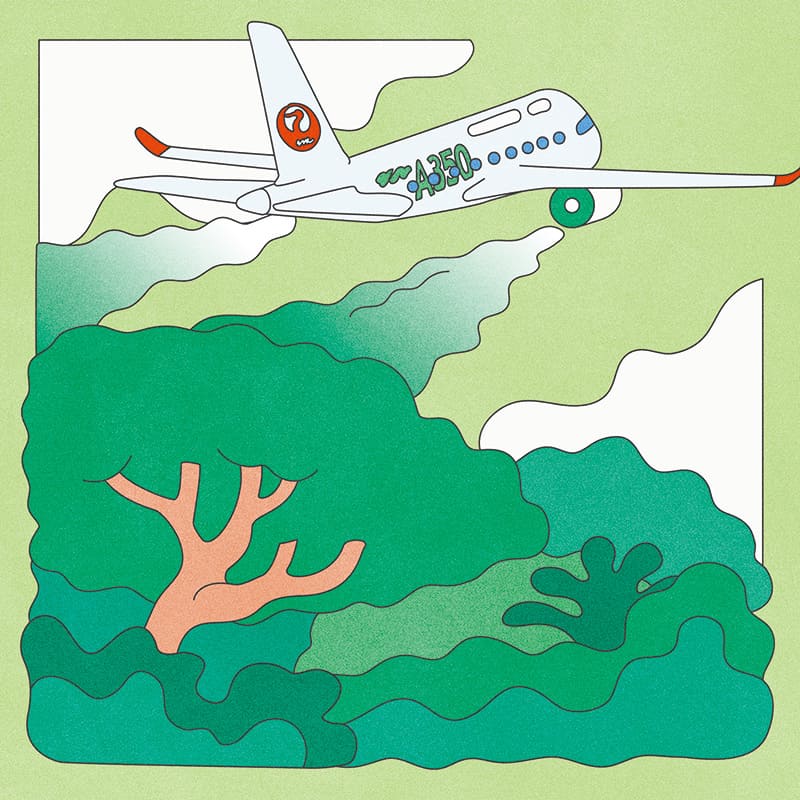
Japan Airlines’ strong points
1. First Japanese airline to pledge net-zero CO2 emissions by 2050
2. Aims to cut carbon dioxide emissions 10% from 2019 level by 2030
3. Strives to introduce sustainable aviation fuel and establish infrastructure for supplying it
4. Has pledged to eliminate petroleum-based single-use plastics in planes and airport lounges by 2025
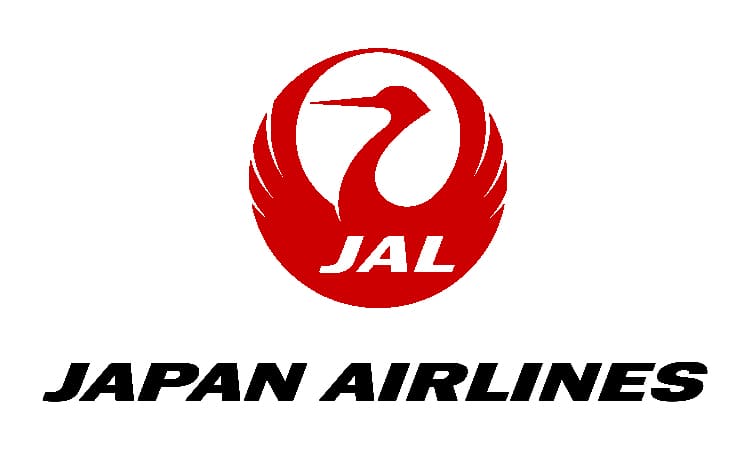
For more than a decade since its bankruptcy in 2010, Japan Airlines Co., Japan’s flag carrier, has focused on safety and stability. But it is now ready to tackle social issues in earnest. And central to that is achieving net-zero CO2 emissions.
In 2020, JAL became the first Japanese airline to set a target of achieving net-zero emissions of carbon dioxide by 2050. The next year, it announced JAL Vision 2030, which set “safety and peace of mind” plus sustainability as its growth engines for the future. In May 2022, it established a major policy that set environmental, social and governance (ESG) strategy as the centerpiece of its management strategy.
The airline industry emits large amounts of carbon dioxide, leading some environmentally aware people to begin the “flight shaming” movement against air travel.
Of the greenhouse gases emitted by an average company, Scope 1 and 2 emissions — attributable to the company itself — account for 10% to 20%, and the rest fall under the broad Scope 3 category. These proportions are reversed, however, for the airline industry, whose aircraft consume large amounts of fuel.
JAL’s Scope 1 and 2 emissions represented 82% of its total emissions in 2022 — and as much as 99% of that figure was direct Scope 1 emissions from aircraft.
All aircraft in operation around the world emit more than 1 billion tons of carbon dioxide per year — a total that is estimated to account for more than 2% of the CO2 emissions from all human activities, and greater than those from railways or shipping. We are no longer in an era in which the airline business is considered exceptional. JAL made a decision to transform itself.
Pledging early
“First of all, there was a strong sense of crisis in the company, and we worried that the company might not be able to survive unless we seriously addressed the issue of sustainability,” said Noriko Ogawa, vice president in charge of the ESG Promotion Department in JAL’s General Affairs Division.
“Then President Yuji Akasaka insisted we pledge to achieve net-zero CO2 emissions at the general shareholders meeting in June 2020, whatever it takes. That was the start of a major change.”
Today, companies pledging to achieve net-zero CO2 emissions by 2050 are not uncommon. But just three years ago there were not so many, especially in the airline industry.
In Japan, JAL was the first. At that time, even in the global aviation industry as a whole, only a handful of companies had made the pledge, including IAG, the parent of British Airways and Iberia, and then Qantas Airways. JAL’s pledge prompted other companies to follow suit, which eventually resulted in all of its fellow airlines in the oneworld alliance, which includes American Airlines and Cathay Pacific, pledging to achieve net-zero CO2 emissions.
Furthermore, in May 2021, JAL set an interim target of a 10% reduction in CO2 emissions from the fiscal 2019 level by fiscal 2030. It was at the time the most ambitious target for any airline worldwide and surprised its rivals. JAL aims to achieve this tough, self-imposed target by “upgrading to fuel-efficient aircraft,” “reducing CO2 emissions in daily operations” and “supporting the development and the use of sustainable aviation fuel (SAF).”
JAL aims to achieve a 100% reduction from the 2019 level by 2050 through its own efforts alone, without relying on the purchase of carbon credits. It expects to be able to achieve 50% of this reduction through the greater use of cutting-edge, fuel-saving equipment.
In September 2019, the company introduced the Airbus A350, a state-of-the-art aircraft, in domestic routes. This was followed the next month by the introduction of the Boeing 787, which JAL had used in international flights since 2012, to domestic flights. These aircraft can reduce CO2 emissions by 15% to 25% from the levels of conventional counterparts.
This past March, JAL decided to introduce the Boeing 737-8 in phases beginning in 2026 to replace the Boeing 737-800, the most common plane in its fleet. It was the first time in 18 years that JAL had ordered a new Boeing model. The company expects that with the 737-8, it can reduce CO2 emissions by about 15% over the levels of the 737-800.
JAL expects to be able to eventually cut emissions by 50% with the help of next-generation aircraft, including those propelled by hydrogen or electricity, which it is considering introducing, in addition to aggressively introducing current cutting-edge aircraft.
The measures for reducing carbon emissions in its daily operations range widely, from the introduction of a method for landing approaches that can shorten flight distances to a revision of flight schedules.
In its winter 2022 flight schedule, JAL came up with the creative idea of extending scheduled flight times by five minutes for some of the last flights of the day from Haneda Airport to destinations in western Japan and Kyushu, aiming to reduce fuel consumption by allowing pilots flexibility in choosing altitudes and speeds that are more efficient.
JAL expects these diligent efforts in its daily operations will add up to a reduction of 5% by 2050.
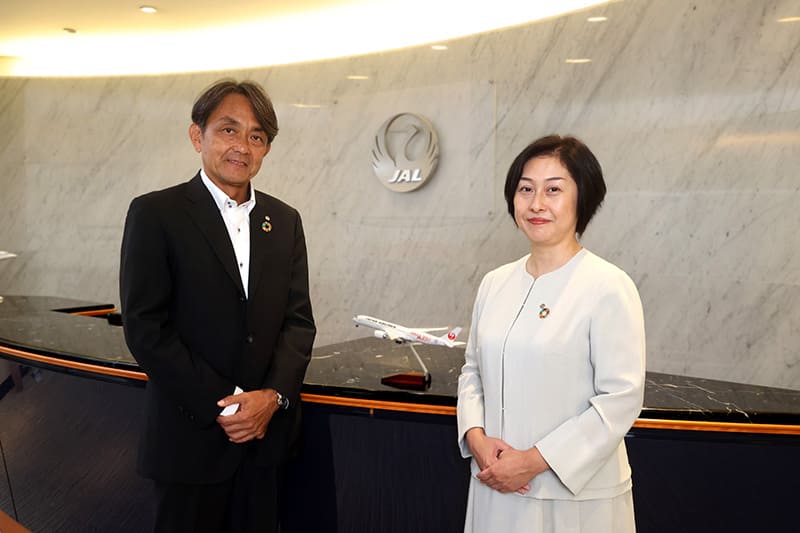
COURTESY: JAL
Sustainable aviation fuel
JAL cannot unilaterally introduce fuel-saving aircraft or creative ideas in its daily operations — it needs to work with various companies and organizations, including aircraft makers, the transport ministry and air traffic control. Even more difficult to achieve alone is the introduction of sustainable aviation fuel.
SAF is an environmentally friendly fuel manufactured from materials such as used cooking oil and sugar cane. As it is made from waste materials through processes that use renewable energy, SAF is estimated to reduce emissions of carbon dioxide by 50% to 80% over conventional jet fuel, which is made by refining crude oil.
Since it can be mixed with regular jet fuel, it can be used in conventional aircraft. The fuel is attracting attention around the world.
The European Union has been working on a bill that would require a minimum SAF content in fuel at EU airports of 37% in 2040 and 85% in 2050. The U.S. has set a target of replacing all standard aviation fuel with SAF by 2050 and has been supportive of efforts to develop technologies related to its production.
In May 2021, it announced a long-term target of reducing its overall CO2 emissions by 45% by 2050 through the use of SAF. Four months later, JAL, together with its rivals, announced a medium-term target.
JAL and ANA Holdings Inc., the two largest airline companies in Japan, together joined the World Economic Forum’s Clean Skies for Tomorrow Coalition, which promotes greater use of SAF. The companies signed a memorandum that aims to replace 10% of the fuel in their aircraft with SAF by 2030.
As an interim target, JAL also aims to replace 1% of all fuel with SAF by 2025. For this, in June JAL signed a contract with the aviation fuel division of Shell USA Inc. under which it will buy SAF at Los Angeles International Airport. Thanks to this, JAL now expects to be able to exceed its 1% target.
But beyond that, it has yet to secure enough SAF to replace 10% of its conventional fuel by 2030.
Domestically produced SAF
SAF is said to be two to 10 times more expensive than conventional jet fuel. And its supply is still woefully insufficient.
Compared to the 400 million to 500 million liters of sustainable aviation fuel that JAL alone will require in 2030, the global total was 63 million liters in 2020 — just 0.03% of all aviation fuel. There are only a handful companies in the world that currently can steadily supply SAF. And in Japan the infrastructure for supplying it has yet to be established.
For JAL to reach its target, building infrastructure to mass-produce SAF in Japan and supply it stably at Japanese airports is essential. Facing the difficulties this situation presents, JAL actually began to take action in 2018.
That October, it launched a project to make SAF from old cotton clothing. Collecting 250,000 pieces of old clothing from around Japan, it successfully manufactured Japan’s first SAF that qualified under an international fuel certification.
In February 2021, JAL flew the first aircraft using this fuel on a regular flight. Four months later, it flew the first aircraft using two domestic types of SAF made from wood chips and microalgae. The company has thus worked to promote SAF for commercial use in Japan.
However, these projects and tests are still insufficient. Unless sustainable aviation fuel can be mass-produced, prices will remain high and wider use will not be achieved. JAL thus became one of the founders of the Act for Sky group, a collaboration that aims to achieve a stable supply of domestically produced SAF, in March 2022.
The other founders were the plant engineering company JGC Holdings Corp.; Revo International Inc., a supplier of SAF production materials; and All Nippon Airways Co. A way of thinking unique to JAL lay behind its decision to cross the boundaries separating it and its rivals and companies in other industries.
“Developing a supply structure for domestically produced SAF concerns the national interest,” said Managing Executive Officer Noriyuki Aoki, who serves as chair of the company’s Sustainability Promotion Committee. “It was a natural decision for JAL, which has a history of striving for society and people.” (See the article in the box.)
JAL, which had been strictly a buyer of fuel, has now teamed up with companies on the supply side in an effort to realize sustainability. This can be said to be an ideal form of sustainability management for JAL.
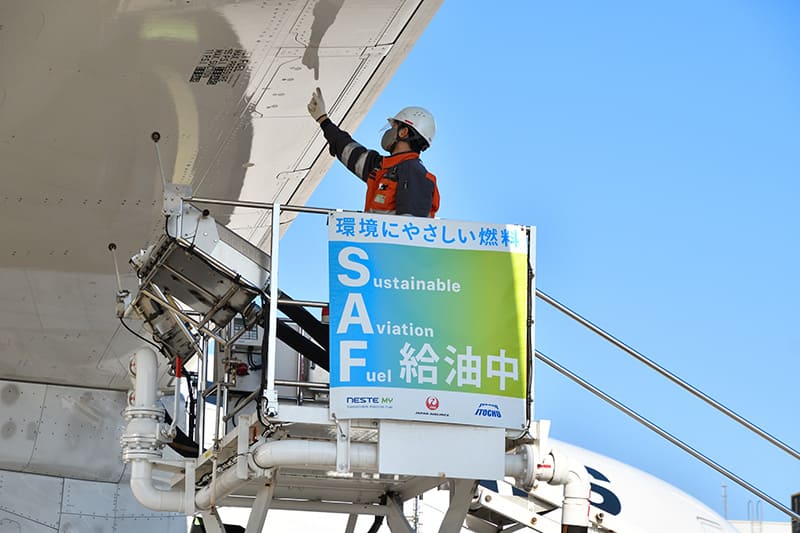
COURTESY: JAL
Circular economy
“We regard our sustainability measures as an opportunity to generate new value, rather than risk-mitigating measures,” Aoki said.
As reflected in his words, JAL’s sustainability-oriented management is centered on “creating value that can contribute to society.” That is why JAL is ready to team up with any partner that can help it create value, and the scope of JAL’s value creation is not limited to decarbonization.
For example, it has been working on initiatives toward making the economy circular, including an effort to reduce its use of disposable plastics. With a target of entirely eliminating petroleum-based single-use plastics in aircraft cabins and airport lounges by 2025, it is working, for example, to replace meals’ packaging and trays with recycled or paper products. One cannot find any other company that has made a similar pledge.
This past January, JAL began switching from plastic to paper for the containers and lids of the main economy-class dishes on international flights. The new paper container that JAL jointly developed with a container maker has the same capacity and strength as its plastic counterparts. JAL plans to introduce the container in economy class on all routes by this fall, aiming to annually reduce the use of plastic by 150 tons.
It has also launched efforts to reduce food waste from in-flight meals and recycle food waste. In December 2022, JAL became the first airline to introduce a service under which passengers can cancel in-flight meals in advance when they do not need them — for example, on late-night flights — for all classes on all of its international routes. JAL donates a specified amount per cancelled meal to school meal services in developing countries that suffer from hunger.
JAL’s efforts to create new value are not limited to conventional aircraft. It also aims to operate a “flying vehicle” at the 2025 Osaka-Kansai Japan Expo.
“Are we doing this out of the traditional corporate way of thinking, like, ‘Let’s start a new business and make some money’? No, we aren’t,” Aoki said. “The ‘safety in the sky’ we have developed over the years should be useful for new forms of air mobility. We think the value of our existence is in the role of helping to make them established in society as safe infrastructure.”
Aoki said he remembers something a JAL employee once told him.
“Aoki-san, you are talking a lot about ESG and SDGs (U.N. sustainable development goals) now, but that has been the way of our company since a long time ago,” Aoki quoted the person as saying. “The motivation to be useful for society and people is in our DNA.”
JAL is applying the new value of sustainability and trying to be stronger. I imagine its experience of recovering from bankruptcy has given it the strength to fly into a new future at full throttle.
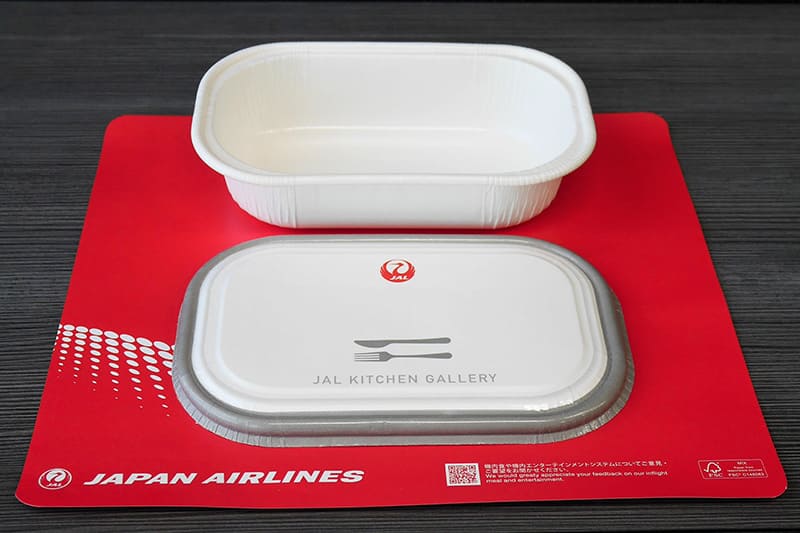
COURTESY: JAL
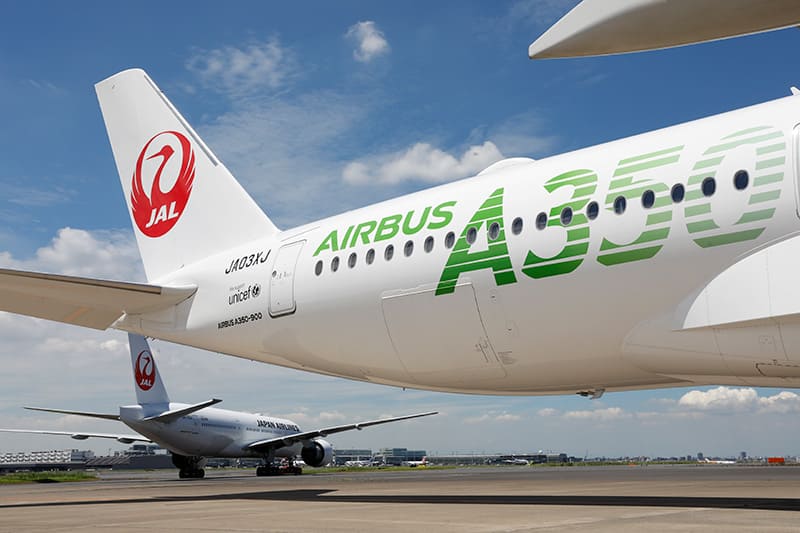
COURTESY: JAL
Making society sustainable is a mission for JAL
Aoki Noriyuki
Managing Executive Officer
Senior Vice President,
General Affairs
Chair of Sustainability Promotion Committee
The COVID-19 pandemic was a very significant turning point for our major transformation of putting sustainability at the center of our management policy.
In the past, transporting passengers to their destinations comfortably and safely was the biggest purpose of JAL. It was also the value we offered to society. However, the experience of the pandemic forced us to think of how the aviation industry is related to society.
A company that has no way of dealing with social issues cannot remain a company today. Simply transporting passengers to their destinations may not be enough for us to demonstrate JAL’s value. Driven by such thoughts, we worked out JAL Vision 2030, our new management vision, whose focus is on “creating a safe and secure society” and “building a sustainable future,” and a medium-term management plan, announcing them in May 2021. In May of the following year, we announced the Rolling Plan 2022, in which a course adjustment was made to put ESG strategy at the center of the medium-term plan.
With “solve social issues and create sustainable flows of people, commodities and logistics” stated in the vision and put at the center of management, JAL’s sustainability strategy became management itself.
The JAL group is working to introduce sustainable aviation fuel (SAF), as well as upgrading to fuel-efficient aircraft as part of efforts to achieve carbon neutrality by 2050. Furthermore, the group is actively working to build SAF supply infrastructure.
Decarbonizing our society is impossible without coordinated efforts by different industries. It is an issue not just for JAL; we should address it, regarding it as a new opportunity for Japan as a whole.
We do not yet have supply infrastructure for domestically produced SAF. If Japanese airports remain incapable of supplying SAF, do you think overseas airline companies will continue to fly their planes to Japan? By contrast, if Japanese airports can supply large amounts of SAF at low cost compared to other airports in Asia, that would create new value that would attract the world’s airline companies.
In other words, it would contribute to the national interest as well as decarbonization of the world’s aviation industry as a whole. This may sound like hyperbole, but I believe that the promotion of SAF is a national industrial policy issue and an issue of energy security.
What makes us so serious about this? When I think of our origin, the founding spirit of “work for society and people” is still rooted deeply in our company. That is what has driven us to actively work on humanitarian aid projects, and that spirit led to the current sustainability strategy and new management vision.
So, making our society sustainable is a mission for us, in my view. We will continue working to demonstrate that we are determined to do what we must do, and we are going to live in such a society and take action accordingly.
航空事業で持続可能な未来をつくる。
2010年の経営破綻から10年以上。安全に、安定的に飛ぶことに注力してきた日本のナショナルフラッグ、日本航空(JAL)は今、カーボンニュートラルを中心とした社会課題に本気で立ち向かおうとしている。
2020年に日本の航空会社として初めて「2050年にCO2排出量実質ゼロ」という目標を掲げると、2021年には、サステナビリティを2大パーパスの一つとした経営ビジョンへと刷新。さらに2022年5月には、ビジョンの実現を加速するため、「ESG戦略」を経営戦略の中心に据えるという大きな方針を打ち出した。
JALは自らに課した厳しい目標を、「省燃費機材への更新」「日々の運航での工夫」「『持続可能な航空燃料(SAF)』の開発促進と活用」の3本柱でクリアしようとしている。
2022年3月には、国産SAFの安定供給を目指す有志団体「ACT FOR SKY」の設立に、ANAホールディングスや日揮などとともに、幹事社として参画した。
競合や業界の垣根を超えた連携に乗り出した背景には、日本航空ならではの、ある「想い」があった。
Return to Sustainable Japan Magazine Vol. 28 article list page

